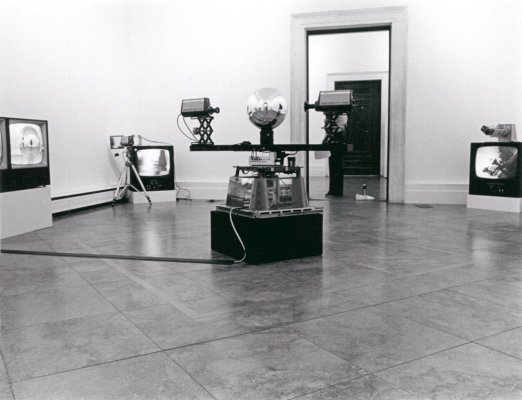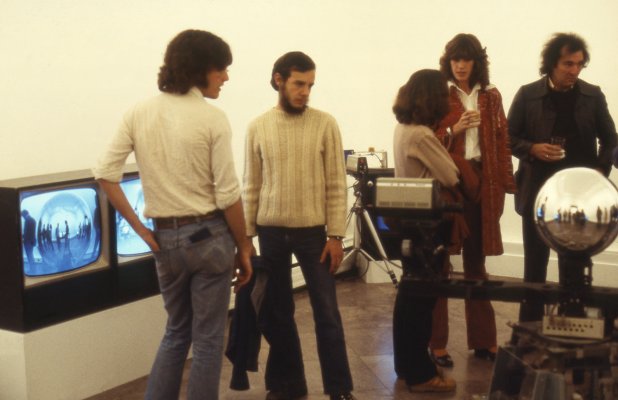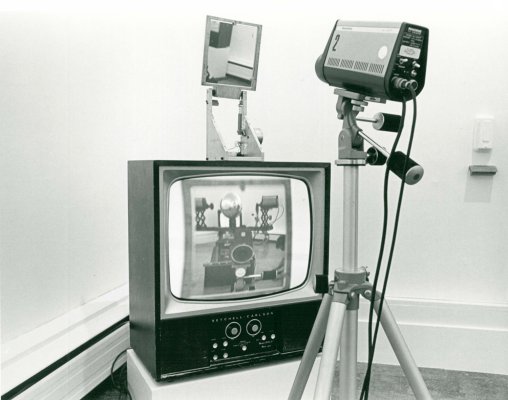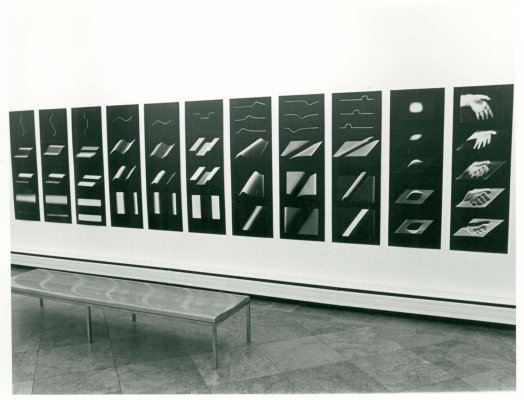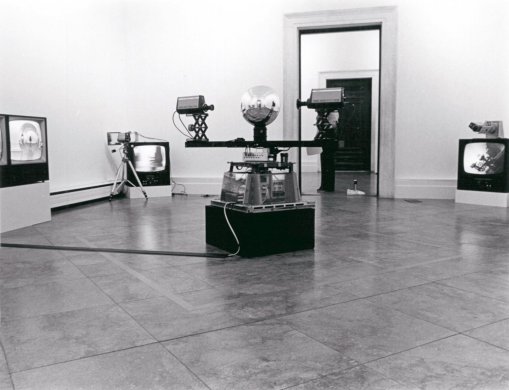In 1978, Curator Linda Cathcart organized an exhibition of Steina and Woody Vasulka’s work at the Albright-Knox. The VASULKAS / Steina: Machine Vision, Woody: Descriptions featured many of their most important works to date, including Steina’s Machine Vision and Allvision—sensory-oriented video installations that suggested the hybridization of human and robotic forms—and Woody’s Descriptions, hundreds of photographs primarily of cathode ray tubes installed as images on the wall in a way that suggested a score-like composition.
In the fall of 1973, the Icelandic artist Steina, trained as a violinist, and her partner, the Czech artist Woody Vasulka, who had studied engineering, film, photography, and poetry, moved from New York to Buffalo, where, in 1974, Woody took a position as an Associate Professor in the Center for Media Study at the University at Buffalo. The Vasulkas were among the earliest practitioners of video—along with artists such as Joan Jonas, Jonas Mekas, Bruce Nauman, and Nam June Paik—and soon this became the primary focus of their practices. Areas of exploration included the manipulation of feedback, the video signal, and image processing; the possibilities of multimonitor displays; the interaction of the spectator; and the intersection of music and noise with video.
